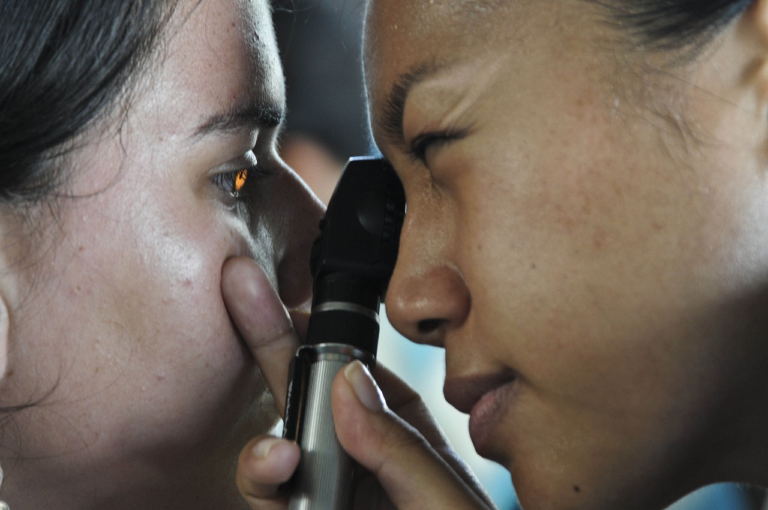Preparing for Emergencies as a Person Living with diabetes – What to Do and Have On Hand?
#ez-toc-container {
background: #f9f9f9;
border: 1px solid #aaa;
border-radius: 4px;
-webkit-box-shadow: 0 1px 1px rgba(0, 0, 0, .05);
box-shadow: 0 1px 1px rgba(0, 0, 0, .05);
display: table;
margin-bottom: 1em;
padding: 10px 20px 10px 10px;
position: relative;
width: auto;
}
.ez-toc-container-direction {
direction: ltr;
}
.ez-toc-list-level-1 a{
font-weight:bold;
}
Table of Contents
1. Introduction: Understanding the Importance of Emergency Preparedness for Individuals with Diabetes Discuss the unique challenges faced by individuals with diabetes during emergencies Highlight the significance of being prepared for both natural disasters and personal medical emergencies to maintain health and safety Provide an overview of the topics to be covered in the article
Emergencies can strike without warning, leaving individuals scrambling to ensure their safety and wellbeing. For individuals with diabetes, such scenarios pose a unique set of challenges that can significantly impact their health and safety. Understanding the importance of emergency preparedness is crucial for these individuals to maintain optimal health during unforeseen situations, be it natural disasters or personal medical emergencies.
Diabetes management requires constant vigilance and access to various supplies, medications, and technology. During emergencies, disruptions in access to these essentials can lead to severe health complications. It is imperative for individuals with diabetes to be proactive in their emergency planning to mitigate these risks.
Unique Challenges Faced by Individuals with Diabetes During Emergencies
-
Access to Medication: Continuous access to insulin and other medications is vital for people with diabetes to manage their condition effectively. During emergencies, this access can be disrupted, leading to elevated blood sugar levels and potential ketoacidosis.
-
Food and Nutrition: Maintaining a balanced diet is crucial for blood sugar control. In emergency situations, such as natural disasters, access to appropriate food can be severely limited, posing a challenge for blood sugar management.
-
Healthcare Access: Routine check-ups and access to medical professionals may be hindered, leading to difficulty in managing diabetes-related complications and receiving timely medical intervention.
-
Technology Reliance: Dependence on devices such as continuous glucose monitors and insulin pumps may pose challenges during power outages or if the devices are damaged or inaccessible.
Significance of Being Prepared for Natural Disasters and Personal Medical Emergencies
Being prepared for emergencies involves more than just stocking up on supplies. For individuals with diabetes, it means ensuring that their unique health needs are met even in the most challenging situations. The importance of emergency preparedness cannot be overstated, as it helps:
-
Maintain blood sugar levels within a healthy range.
-
Prevent the onset of acute diabetes-related complications.
-
Enhance psychological well-being by reducing stress and anxiety associated with uncertain situations.
-
Ensure continued access to lifesaving medications and technologies.
-
Facilitate communication with healthcare providers during an emergency.
As we delve deeper into the aspects of emergency preparedness for individuals with diabetes, the following topics will be comprehensively covered in this article:
- Essential supplies and medications to include in a diabetes emergency kit.
- Strategies for maintaining a balanced diet during emergencies.
- Creating an effective diabetes emergency action plan.
- Managing diabetes without technology—what to do if devices fail.
- Effective communication strategies with healthcare providers and emergency personnel.
- Psychological readiness and managing stress related to emergencies.
Ultimately, this article aims to equip individuals with the knowledge and actionable strategies needed to navigate emergencies while effectively managing their diabetes. The insights provided will help ensure health preservation and safety, allowing individuals with diabetes to face emergencies from a position of preparedness and strength.

2. Essential Medical Supplies and Equipment to Have On Hand List and describe the critical diabetes management supplies needed in an emergency (eg, blood glucose monitors, insulin, syringes, test strips) Discuss the importance of maintaining an adequate stockpile of medications and supplies, including refrigeration solutions for insulin Explain the need for a backup power source or alternative methods for device operation in case of power outages
In an emergency, having essential medical supplies on hand is crucial for those managing chronic conditions such as diabetes. Being prepared with the right equipment and a well-thought-out plan can make all the difference. Here, we focus on the critical diabetes management supplies needed during emergencies and discuss the importance of maintaining a stockpile of medications, solutions for refrigeration, and alternative power sources.
Below is a comprehensive list of essential diabetes management supplies:
- Blood Glucose Monitors
A reliable blood glucose monitor is indispensable for people with diabetes, enabling them to keep track of their blood sugar levels accurately. In an emergency, having a portable and battery-operated glucose monitor ensures continuous monitoring without relying on electrical power.
- Insulin
Insulin is a critical medication for many individuals with diabetes. It’s essential to have an adequate supply stored properly. Consider having a one-month supply at hand to tackle any sudden shortages.
- Syringes and Pens
These tools are necessary for administering insulin. Having extra syringes or insulin pens can provide peace of mind if regular access to pharmacies is disrupted during an emergency.
- Test Strips
Alongside your blood glucose monitor, test strips are vital. Always have more than enough as they can assist in frequent testing to maintain blood sugar levels within the target range.
- Ketone Strips
In situations where blood sugar levels are high, ketone testing becomes important to prevent diabetic ketoacidosis, a serious complication. Keeping ketone strips in your emergency kit is advisable.
- Fast-Acting Carbohydrates
During hypoglycemic episodes, quick and effective treatment is needed. Include items such as glucose tablets or gels in your stockpile.
- Glucagon Kit
In cases of severe hypoglycemia where oral intake isn’t possible, a glucagon kit can be life-saving.
The importance of maintaining an adequate stockpile cannot be overstressed:
- Adequate Stockpile of Medications and Supplies
Having a reserve of medications and supplies ensures continuous management of diabetes. In emergencies, delays in accessing pharmacies can lead to exacerbation of the condition. Regularly checking expiration dates and rotating supplies can help maintain an effective stockpile.
- Refrigeration Solutions for Insulin
Since insulin requires refrigeration, having a plan for when electricity is unavailable is prudent. Portable coolers or specialized insulin cooling cases are excellent solutions. In more severe scenarios, seeking community resources or emergency shelters with refrigeration options is a wise approach.
Power outages pose a significant challenge, especially for electrically dependent devices:
- Backup Power Source for Devices
Devices such as insulin pumps and continuous glucose monitors (CGMs) are often powered by electricity. Consider keeping backup batteries or a portable charger that can be solar-charged or manually operated. This ensures that devices continue running until power is restored.
- Alternative Methods for Device Operation
Familiarize yourself with manual methods or backup devices, such as using regular glucose monitors if CGMs fail, or knowing how to manually inject insulin if pumps become inoperable. Keeping an instruction manual or a checklist of procedures can be very useful in high-stress situations.
In conclusion, while emergencies often come unannounced, being prepared with essential diabetes supplies and maintaining a structured plan for medication management, refrigeration, and power outages significantly reduces risks and promotes health and safety.

3. Preparing a Diabetes
When it comes to managing diabetes, preparedness is key, especially in emergency situations that might disrupt routine medical care or access to important supplies. Creating a comprehensive, diabetes-specific emergency kit is essential for ensuring that individuals with diabetes have everything they need to manage their condition safely and effectively during unexpected events. This guide will outline the key components needed for such a kit, including non-perishable foods, water, diabetes-friendly snacks, and critical documentation.
Firstly, let’s dive into how to construct this crucial emergency kit:
1. Diabetes-Specific Food and Nutrition
In times of emergency, access to food might be limited. Therefore, it is vital to include non-perishable items and diabetes-friendly snacks that can provide sustained energy.
- Non-Perishable Foods: Choose items that are shelf-stable and have a long shelf life. This can include canned beans, lentils, tuna, or chicken. Select options that are low in sodium and avoid sugary snacks.
- Diabetes-Friendly Snacks: Opt for snacks that provide sustained energy without spiking blood sugar levels. Consider including nuts, seeds, or whole-grain crackers.
- Glucose Tablets or Gel: These are essential for quickly raising blood sugar levels in case of hypoglycemia.
2. Essential Hydration
Staying hydrated is crucial, especially for individuals with diabetes. Always keep an ample supply of water in your emergency kit.
- Bottled Water: Aim to have at least a three-day supply of water per person. This is approximately one gallon per day per person.
3. Medical Supplies and Medications
This segment of the emergency kit is vital for maintaining routine diabetes care during an emergency.
- Medication: Keep an updated list of medications along with their dosages. Store at least a week’s supply of all necessary medications and insulin in a cool, dry place.
- Insulin Delivery Supplies: Include insulin pens, syringes, or insulin pumps as applicable. Don’t forget about alcohol swabs for sterile injection sites.
- Blood Glucose Testing Supplies: This includes a sufficient stock of test strips, lancets, and a portable glucometer.
- Secondary Diabetes Management Devices: It may be prudent to have spare batteries or backup devices in case primary devices fail.
4. Documentation and Emergency Contacts
In emergencies, having up-to-date and accessible medical information can be lifesaving. Keep vital documents within your kit.
- Emergency Contacts List: Include phone numbers for your healthcare provider, pharmacy, and emergency contacts such as family members or friends.
- Medical Records: Having a copy of your medical records can be extremely helpful in ensuring continuity of care, especially if you cannot access your regular healthcare providers.
- Identification and Insurance Information: Always have a copy of your ID and health insurance card.
5. Additional Survival Supplies
A rounded kit should also cater to other basic survival needs to better cope with emergencies.
- First Aid Kit: Include basic first aid supplies to manage minor injuries.
- Flashlight and Batteries: Keep a flashlight handy with extra batteries for power outages.
- Multi-tool: A reliable multi-tool can assist with a wide range of survival tasks.
Creating a diabetes-specific emergency kit requires careful consideration of both general and diabetes-specific needs. Regularly inspect items to ensure all components are in working condition and medications are within their expiration dates. Proper preparedness not only provides peace of mind but can also be lifesaving in times of unexpected emergencies.
4. Developing an Emergency Action Plan Explain how to create a personalized emergency action plan, taking into consideration the individual’s medical needs and lifestyle Encourage collaboration with healthcare providers to ensure all aspects of diabetes care are addressed in the plan Highlight the need for regular reviews and updates of the emergency plan based on evolving health needs and circumstances
Creating a personalized emergency action plan is crucial for individuals managing diabetes. An emergency can arise at any time, and having a well-thought-out plan can significantly reduce the risks associated with sudden health crises. This comprehensive guide will help you develop a tailored emergency action plan, considering your unique medical needs and lifestyle, and ensure collaboration with healthcare providers. Additionally, it will discuss the importance of regularly reviewing and updating your plan to accommodate evolving health needs and circumstances.
Steps to Create a Personalized Emergency Action Plan
-
Evaluate Your Medical Needs:
- Begin by assessing your current health status. Identify any specific diabetes-related medical needs that should be addressed in an emergency.
- Consider any other existing health conditions that might complicate your diabetes management during an emergency.
- Account for the types of medications, devices, or supplies you require daily.
-
Understand Your Lifestyle:
- Reflect on your daily routines and any factors that might impact your healthcare needs during an emergency, such as work schedule and travel frequency.
- Consider your living situation, including whether you live alone, with family, or in shared accommodations.
- Identify local resources, such as nearby healthcare facilities and pharmacies, and their emergency protocols.
-
Assemble Essential Supplies:
- Create an emergency supply kit that includes your medications, glucose monitoring tools, and other diabetes management supplies. Rotate these supplies regularly to ensure they remain up-to-date.
- Include a copy of your medical information, including emergency contacts, medical history, and any allergies.
- Pack non-perishable food items and water to sustain you in a prolonged emergency.
-
Develop Clear Communication Strategies:
- Ensure that you have a reliable means of communication available at all times, whether it’s a mobile phone or another device.
- Establish a contact list of people who need to be informed in an emergency, including family, friends, and healthcare providers.
- Practice conveying vital medical information quickly and clearly.
-
Collaborate with Healthcare Providers:
- Schedule a meeting with your healthcare provider to review your emergency action plan, ensuring that all aspects of your diabetes care are adequately addressed.
- Discuss special accommodations you might need during an emergency, such as insulin stockpiling or specific dietary requirements.
- Inquire about additional resources or support available through local healthcare networks or diabetes associations.
The Importance of Regular Reviews and Updates
-
Reasons for Regular Reviews:
- Your health needs may change over time; frequent reviews ensure the plan remains effective.
- Emerging technologies and new medications could enhance your emergency preparedness.
- Evolving personal circumstances, like moving homes or changing work environments, may necessitate adjustments to your action plan.
-
How to Effectively Review and Update:
- Establish a routine to review your emergency action plan at regular intervals, such as every six months or following any major life changes.
- Engage with healthcare providers and seek their input on any new developments in diabetes care that might impact your plan.
- Test your plan periodically through drills to ensure its functionality and that all involved parties understand their roles.
In conclusion, a personalized emergency action plan is an essential component of diabetes management. By considering individual medical needs and lifestyle factors, collaborating closely with healthcare providers, and ensuring regular updates, such a plan can provide peace of mind and increased safety during emergencies. This proactive approach not only helps in safeguarding health but also fosters resilience in the face of unexpected challenges.



